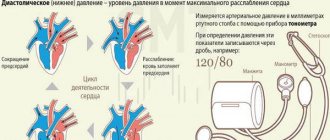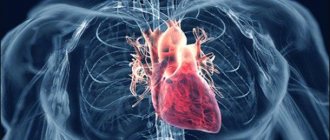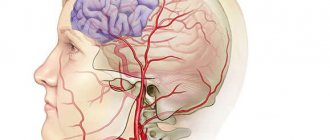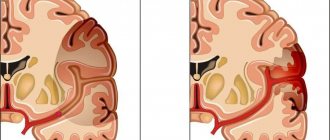Often, against the background of temperature in hypertension, there is a fluctuation in blood pressure - the higher the thermometer readings, the higher the blood pressure. There are cases of a different clinical scenario when an increase in temperature is observed with low blood pressure.
A number of specific factors contribute to the lability of blood pressure in relation to hyperthermia: medical history, age, complications of respiratory infections.
Adequate treatment is associated with eliminating the underlying cause and normalizing blood pressure.
Temperature and pressure, their norm
Before determining the norm, it is important to understand which factor is dominant. There are two clinical situations:
- high temperature and pressure above 130/80 mmHg;
- high blood pressure (BP or arterial hypertension) with a simultaneous increase in body temperature.
In the first case, hypertension is secondary, the increase is insignificant, normalization occurs after treatment of the causes of hyperthermia.
The second case is more common in therapeutic practice. AD is primary or secondary in nature, but is almost always accompanied by hyperthermia.
It is not necessary that a hypertensive patient has an acute respiratory viral infection or the flu. The interaction mechanism is determined by natural factors. Normal indicators are:
- blood pressure 120/80 in adults, 90/60 in children under 7 years of age;
- temperature from 36.6 to 38.0 degrees Celsius.
It is generally accepted that the temperature should be reduced at 38.0 degrees Celsius. The exception is patients with febrile seizures, severe developmental pathologies, and a complicated medical history.
It is normal if blood pressure temporarily remains at 130/90 against the background of a high temperature without other clinical manifestations. A constant increase in blood pressure is not normal, as it indicates arterial hypertension.
Indications for emergency assistance may include the following symptoms: shortness of breath, respiratory failure, thready pulse, depression of consciousness, panic.
It is especially important to monitor the health status of patients with existing diseases of the heart, blood vessels, thyroid gland and kidneys.
Vegetative crisis
Another possible cause of high temperature and pressure is a vegetative crisis. The more common name for this condition is panic attacks. Those who have experienced them will never say something like “you just lost your nerves” or “you need to be less emotional.” Panic attacks are an unpredictable condition that is more common in young people - 25-35 years old.
A panic attack is considered an extreme form of manifestation of such an illness as vegetative-vascular dystonia (VSD). She demonstrates disorders of the nervous system. This is not a term from psychologists, but a medical disease, which, according to the international system of classification of pathologies, is called panic disorder or episodic paroxysmal anxiety.
Vegetative crises are:
- Light. Such states last no more than half an hour, the disorders are minor, but it is difficult to confuse them with something.
- Moderate weight. They last up to an hour, they are characterized by multiple somatic abnormalities, which are replaced by asthenia (the so-called neuropsychic weakness).
- Heavy. They last more than an hour, they are accompanied by paroxysms with asthenia, which lasts several days.
Today, doctors distinguish four types of panic attacks, each of them has its own characteristic symptoms. For example, a sympathetic-adrenal crisis manifests itself as severe anxiety, to the point that a person thinks that he is going to die. His pulse actually increases extremely high, his blood pressure rises, and he experiences unpleasant sensations in the chest area.
Or take a hyperventilation crisis: during this, a person’s breathing quickens, he lacks air, his blood pressure rises, his temperature rises, his muscles become toned, and his head becomes dizzy.
Any panic attack seems to come out of nowhere. This is not a growing condition, but an acute and unexpected one. But in fact, she always has reasons. It’s just that the vegetative crisis itself, to a certain extent, can be considered a delayed reaction of the body to stress.
Why does high blood pressure raise temperature?
Can temperature rise with high pressure? A simultaneous increase in temperature and pressure can be caused by a number of external and internal factors.
Pressure and temperature may rise for the following reasons:
- hypertensive crisis;
- acute heart failure, pulmonary edema;
- meningeal symptoms;
- vegetative attacks;
- tumor-like neoplasms;
- severe pathologies of the thyroid gland.
Increased temperature and high blood pressure are observed against the background of severe respiratory infections, complications of ARVI, influenza, and intestinal infections.
With general intoxication, the condition of the whole body worsens, and there is an effect on the cardiovascular system. Associated symptoms of hypertension are often:
- increased sweating;
- headaches, dizziness;
- nausea ending with vomiting;
- stool liquefaction;
- depression of consciousness (at critical levels).
With a simultaneous increase in blood pressure and hyperthermia, the person’s condition always suffers, which is expressed in different symptoms. If hypertension causes blood pressure to rise and the temperature to rise, then dynamic control over the patient’s condition is important.
In the absence of positive dynamics and a sharp deterioration in the condition, emergency assistance should be called.
You should not take any action on your own. The introduction of drugs unknowingly can provoke a rapid deterioration in health.
Adrenal glands
If you have problems with the adrenal glands, the first symptoms are fever and high blood pressure.
The adrenal glands are organs that produce hubbub that regulates fluid levels and water-salt balance in the blood. With a disease called pheochromocytoma, the proper functioning of the adrenal glands is disrupted, and blood pressure and temperature rise. The disease itself is a tumor composed of neuroendocrine cells. The neoplasm can be benign or malignant. The cells contained in the tumor produce the hormones adrenaline, dopamine and norepinephrine. In a healthy body, the adrenal glands themselves secrete these hormones, but during times of stress, the tumor secretes them constantly. When there is an excess of hormones secreted by the tumor, a catecholamine crisis develops.
Catecholamine crisis
It appears abruptly against the background of physical activity, overeating or fasting, taking beta-blocker medications, and when changing body position. The development of a crisis is provoked by emotional overstrain and a stressful situation, due to which blood pressure and temperature rise sharply. Symptoms include headaches and rapid breathing. Fear and severe anxiety appear, severe sweating and marbled skin color are possible. During exacerbations, patients experience nausea, vomiting, pain in the abdomen and in the heart area, and rapid pulse. There is visual impairment. The crisis lasts 5-30 minutes and passes quickly without taking medications.
Simultaneous increase in temperature and blood pressure
In addition to the general causes, there are several main diseases for which high blood pressure and high body temperature at the same time are a direct symptom.
Increased pressure and temperature are observed with vegetative-vascular dystonia. Impaired functionality of the autonomic nervous system often provokes arterial hypertension along with hyperthermia.
This condition is expressed in the following additional symptoms:
- strong fear, panic;
- severe respiratory failure;
- profuse sweating;
- tachycardia;
- muscle weakness.
The duration of the vegetative crisis varies from several minutes to 1-2 hours. During a crisis, it is important to monitor the patient’s condition and blood pressure indicators.
For short-term episodes, drug assistance during an attack is ineffective - the attack itself will end much before the drugs begin to act.
The basis of crisis prevention is a qualitative and differential examination of the nervous system and the general health of the patient. Long-term drug therapy is effective and is indicated to prevent acute conditions.
Why are both temperature and pressure still rising? We are talking about a pathology - a tumor in the adrenal gland, which is called pheochromocytoma. The pathological neoplasm is predominantly benign in nature.
The risks of developing a malignant tumor increase due to the negative influence of various factors. The adrenal glands are responsible for the synthesis of hormones, electrolyte balance, blood pressure and fluid volume in the body.
The symptoms of pheochromocytoma are extremely nonspecific, so it is important to differentiate the disease from other nephrological and oncological pathologies.
Pheochromocytoma promotes an increase in parathyroid hormone, and with persistent disturbance the following symptoms appear:
- increased blood pressure and low-grade fever no more than 37.5°C;
- headaches, dizziness;
- decreased visual acuity;
- vomiting, nausea;
- malaise;
- tremor of the limbs.
Crisis conditions require high-quality drug correction to avoid serious complications, including oncology. Regular crises weaken the body, disrupt thermoregulation and hormonal levels. Patients with pheochromocytoma are prescribed special therapeutic nutrition.
If a person has both fever and blood pressure, this may indicate an acute respiratory viral infection, flu or an advanced cold. The diseases are accompanied by an increase in body temperature of 37.5 °C and above.
Hyperthermia is a normal reaction of the body to infectious agents. Blood pressure often rises. Associated symptoms are:
- "burning" face;
- redness of the skin;
- difficulty in nasal breathing;
- signs of inflammation of the ENT organs.
Transient arterial hypertension occurs due to the involvement of the nervous, cardiovascular systems, and kidneys in the pathological process. Sometimes the cause of a simultaneous increase in t and blood pressure is a reaction to medications.
Increased pressure with persistent febrility is observed with secondary infectious complications: pneumonia and pneumothorax, meningitis, encephalopathy, increased intracranial pressure.
Can a person’s blood pressure rise at the same time as they have a fever? Yes, it can, if the cause is a disorder of endocrine function. Thyroid hormones of the thyroid gland are responsible for the harmonious growth and development of the human body.
With hyperthyroidism or excessive production of thyroxine or triiodothyronine, a thyrotoxic crisis occurs with an increase in body temperature and blood pressure. The attacks are accompanied by other symptoms:
- heart rhythm disturbances;
- increased heart rate;
- tremor of the distal limbs;
- psycho-emotional agitation, fear, panic;
- dyspepsia.
Often, thyrotoxic crisis occurs after surgery on the thyroid gland. The condition can be prevented with adequate hormone replacement therapy.
Hypertensive manifestations at low-grade fever often indicate cardiovascular disease. One of the dangerous conditions is myocardial infarction. Dangerous symptoms of a heart attack are:
- cardiopalmus;
- burning in the chest;
- cold sweat on the forehead, back, armpits;
- pale skin, blue discoloration of the nasolabial triangle;
- vomit;
- increase in blood pressure.
After a heart attack, blood pressure is low and the extremities become cold. The condition is a consequence of impaired blood circulation.
After a heart attack, the elasticity of the main heart muscle decreases, patients feel tired, weak, headache, and the temperature increases.
If blood pressure rises, it is important to monitor the patient's condition. You may need emergency medical attention.
Many conditions with sharply elevated blood pressure can lead to disability and death. The same applies to the state when both indicators increase.
Can blood pressure cause your temperature to rise?
Blood pressure, as an independent symptom, does not provoke an increase in body temperature. If this happens, you need to be examined and consult a doctor. Hyperthermia in combination with hypertension can be caused by a pathological process occurring in the body.
Increased blood pressure and temperature are manifested by the following changes in well-being:
- weakness, decreased performance;
- discomfort in the left side of the chest;
- darkening of the eyes;
- muscle pain;
- fainting state;
- increased sweating;
- decreased sensitivity of the limbs;
- arrhythmia.
High temperature at low pressure
High body temperature and low blood pressure are more common in hypotensive patients, who suffer significantly from deterioration of vascular conduction. The condition is aggravated by vasospasm and heart disease.
The true cause at high temperature and low pressure is quite difficult to determine. With hypotension, such a symptom (in the form of low blood pressure and elevated t) can be the cause of many conditions, including viral diseases, pathologies of the heart and blood vessels, tumors, and kidney disease.
Low blood pressure and temperature up to 38 may indicate respiratory infections if the patient suffers from hypotension and chronic kidney inflammation.
The combination of such signs is a rare phenomenon and does not require special drug correction, except for the relief of hyperthermia. Usually blood pressure returns to normal after the underlying disease is eliminated. The main symptoms are:
- malaise, drowsiness;
- headache;
- slight redness of the face;
- chills;
- dyspnea.
The assumption of an increase in t against the background of a decrease in blood pressure in oncology is a fiction, refuted by clinical studies. The precancerous condition may be accompanied by an increase in temperature, but blood pressure remains stable.
There was an assumption that with low pressure and an increase in temperature to 37 degrees, an oncological tumor occurs. But this theory was also refuted.
Precancer is accompanied by an increase in temperature, but blood pressure always remains within normal limits (or is slightly reduced).
Thyroid and its diseases
If there is a problem with the thyroid gland, thyroid hormones begin to be actively released, which, if there is an excess in the blood, provoke a thyrotoxic crisis. It is capable of increasing blood pressure. The temperature may also rise. Patients feel muscle weakness and agitation. Trembling of the arms and legs, increased pulse and shortness of breath are observed. Patients are plagued by attacks of vomiting and indigestion, and they often feel sick. The likelihood of developing a crisis is increased in patients who have undergone thyroid surgery, during pregnancy and childbirth, during injuries and infections. Also, with thyroid diseases, due to inhibition of all biochemical processes in the body, low temperature and low pressure are observed.
Low body temperature and blood pressure
If the blood pressure is low and the body temperature is too low, both pathologies and a temporary non-pathological condition are suspected.
An important clinical argument for the final diagnosis is the duration of the period of pressure reduction, the general condition of the patient with combined symptoms, medical history, and some studies.
The reasons for the simultaneous decrease in blood pressure and body temperature are:
- psycho-emotional exhaustion, lack of sleep, stress factor;
- pregnancy;
- chronic arterial hypotension;
- endocrine system disorders;
- neurological diseases.
With low blood pressure and low temperature, rest and quality sleep are indicated. A simultaneous decrease in vital signs is likely in diseases of the hepatobiliary system, kidneys, and cardiovascular system.
Weakness, apathy, dizziness, thread-like pulse, pale skin, cold sweat, delirium, vomiting may occur - all at once. If these symptoms appear, you should seek immediate medical attention.
If your blood pressure and temperature have increased due to the flu
Flu is not just a cold, but a serious acute viral disease. Unfortunately, it can lead to complications. Even death cannot be ruled out if the patient does not seek medical help in time. The flu has several types. Once inside the cell, the virus begins to multiply hyperactively. It provokes an acute viral infection, in which the patient suffers from fever, intoxication, and increased blood pressure.
The flu cannot be treated on its own, nor can it be diagnosed. In difficult cases, call a doctor at home. If you are able to get to the clinic on your own, go there wearing a cotton-gauze bandage. During the so-called cold season, infectious patients are admitted to the isolation ward.
High blood pressure and low temperature
Low body temperature 34.9-35.5 degrees and high blood pressure are rare. The situation with persistent persistence of hypothermia indicates the development of serious pathologies of the cardiovascular system and thyroid gland.
The causes of high blood pressure and hyperthermia are:
- diabetes mellitus (with a simultaneous increase in appetite);
- side effects of drugs (sedatives, hormones, non-steroidal anti-inflammatory drugs);
- ophthalmotonus (increased intraocular pressure);
- liver function disorders;
- heart failure.
The clinical situation is observed with vegetative-vascular dystonia or vegetative crises. Other symptoms are:
- lethargy, desire to sleep;
- cold extremities;
- sweating, sticky cold forehead;
- slow heart rate;
- "roar" in the ears.
It is important for people with arterial hypertension to regularly monitor their condition, blood pressure, t. If hypothermia persists for a long time, it is recommended to immediately consult a cardiologist or endocrinologist.
Instability of vital signs always indicates problems with the cardiovascular system, thyroid gland, kidneys or organs of the hepatobiliary system (this includes hepatitis, cirrhosis of the liver, stagnation of liver secretions).
Causes
Most often, this phenomenon is observed with colds and pathologies such as:
- Adrenal pheochromocytoma;
- Thyrotoxic crisis;
- Impaired kidney function;
- Vegetative crisis.
Any of the conditions is very dangerous, since without correct treatment the disease becomes more severe, which causes various complications.
Note. High blood pressure and elevated body temperature can be a consequence of heat and sunstroke. In this case, it is urgent to take shelter from the scorching rays of the sun in a cool room and drink a few sips of drinking water. With further exposure to the sun, pressure can rapidly increase, and this leads to a hypertensive crisis.
Diagnostics
Diagnosis of a patient with instability of blood pressure and other indicators or their simultaneous changes involves conducting a whole range of laboratory and instrumental studies.
An important criterion for the diagnostic direction is the study of the patient’s clinical history.
If there are problems with the kidneys and genitourinary system, then consultation with a nephrologist or urologist is mandatory. If a patient has heart disease, then diagnosis begins with a consultation with a cardiologist or cardiac surgeon.
The general scheme of laboratory tests includes:
- blood tests (general, biochemical detailed);
- blood test for hormonal levels (free T4, TSH);
- urine analysis (protein and density indicators are important);
- feces for eggworm, occult blood and dysbacteriosis.
Instrumental methods are variable and correspond to the interests of the patient. Be sure to:
- Ultrasound of the kidneys, adrenal glands, abdominal organs;
- chest x-ray, fluorogram;
- examination of the fundus by an ophthalmologist;
- ECG, ECHO KG;
- computed tomography;
- magnetic resonance imaging.
The final diagnosis is made based on a number of diagnostic criteria.
If the patient’s medical history is complicated, a collegial diagnosis may be required together with all specialists in the relevant treatment profile.
Diagnosis of the problem
To normalize the patient’s condition, it is necessary to conduct an examination and determine what causes the symptoms. Only after this is therapy prescribed.
Diagnostics consists of the following activities:
- Inspection and questioning for complaints.
- Blood pressure measurements.
- Body temperature measurements.
- Ordering a general blood test.
- Conducting a blood test for thyroid hormones.
- Liver function test.
- Urinalysis to evaluate kidney function.
- Electrocardiography.
- Magnetic resonance imaging.
- Computed tomography.
Depending on the results of these studies and the suspected disease, other diagnostic procedures may be performed.
Treatment
Treatment depends on the type of clinical situation and the nature of the underlying disease. The treatment regimen is always built individually, selected for each patient in accordance with the medical history.
There are several general treatment regimens for various diseases:
- Endocrine system. An endocrinologist makes his diagnosis based on blood tests for thyroid hormones and ultrasound of the thyroid gland. If pathologies are detected, hormone replacement therapy and iodine preparations are prescribed.
- The cardiovascular system. For heart disease and high blood pressure, ACE inhibitors, calcium channel blockers, and diuretics are prescribed.
- Nervous system. For neurological disorders, B vitamins, antipsychotics, and sedatives are prescribed. At low temperatures within 35-36 degrees and high blood pressure, antihypertensive therapy is indicated. Hyperthermia is controlled without specific treatment.
- Kidneys and genitourinary system. Drugs are prescribed according to the pathology: antiuroseptics, antibiotics, hormones, drugs against urolithiasis, vitamins, enzymes, diuretics. High blood pressure may directly indicate the development of kidney failure. With active inflammation, an increase in pressure and temperature is often observed.
Treatment of diseases based on increased blood pressure and fluctuations in body temperature is based on two basic principles: eliminating the main cause and relieving associated symptoms.
If an increase in pressure and temperature is observed simultaneously, it is important to monitor the patient’s condition. If the indicators increase dynamically, you must call an ambulance.
If the fluctuations are not associated with concomitant symptoms of ARVI and influenza, then special treatment is not required, low-grade symptoms do not pose a threat to the life and health of the patient. Temperature and low blood pressure require monitoring.
Often, sleep and rest from physical activity are enough to normalize a person’s performance and condition. Blood pressure-raising drugs are not prescribed.
The temperature returns to normal after treatment of the underlying disease. Arterial hypertension requires corrective therapy.
The classic scheme is as follows: ACE inhibitors + calcium channel blockers + diuretics. Transient hypotension does not require special treatment and an increase in mmHg.
Psychosomatics of panic attacks
Fever and high blood pressure, which is triggered by a panic attack, will not be the only symptom. Signs of hypertension, difficulty breathing, acute fears of death - all this makes a crisis a condition that is very difficult for a person to endure. It rarely poses a real threat, but the fact that every crisis is a shock for the patient is beyond doubt.
If you understand that this material concerns you specifically, that you also notice these acute anxiety states with increased blood pressure and temperature, do not ignore further information. For such a patient, it is important to understand the mechanism of development of the pathology, to realize what could have led to it.
Panic attacks have a long history:
- The person was offended. Perhaps in childhood. Or simply in a situation where he least expected it. We can say that the traumatic event left a “scar” on the psyche. At the same time, the event itself is forgotten, repressed from consciousness.
- New stress has arisen. It’s just that resentment gave way to aggression, rage, anger. This is already a psychological trauma, partially conscious of the person.
- Increased irritability has become a personality trait. It turned into a phobia. A phobia can be different: from the fear of getting sick with something incurable to the horror of getting into an awkward situation. Ideally, the phobia should change behavior. In order not to get sick with a terrible disease, you just need to go to the doctor more often, get tested, etc. In order not to be afraid of your boss, you need to work through your fears with a psychologist, work out an algorithm for communicating with him, etc.
- If the phobia is not replaced by a behavioral reaction, the subconscious triggers the mechanism of a panic attack.
As already mentioned, a vegetative crisis in itself is not a threatening condition. But still, its frequent repetition leads to the development of pathologies.
More often, a person develops serious phobias: someone is afraid of closed spaces to the point of fainting, and a simple ride in an elevator becomes a test for him. Someone is afraid of death, and every exit from the house for him is like a step towards it.
What should you do in this case? Be sure to go to the doctor. First to your therapist, then perhaps to a psychotherapist. It would not be a bad idea to visit a neurologist. Most likely, you will be prescribed sedatives and told what to do when a new attack begins.
conclusions
Low body temperature and high blood pressure (and vice versa, when blood pressure decreases) occur against the background of pathologies of internal organs and systems, and any pathological condition can increase/lower the body temperature.
Frequent fluctuations in blood pressure and temperature should alert a person. If accompanying symptoms appear and there is a significant deterioration in health, you should call an ambulance, as this may be a sign of a heart attack or stroke.
Almost every medical examination is based on temperature and pressure readings. Each diagnostic criterion narrows the range of possible diseases and helps determine the final diagnosis.
To prevent crises and other serious conditions, it is recommended to consult a doctor in a timely manner and follow all medical recommendations.
Kidney dysfunction
Hypertension is sometimes observed when the renal artery is narrowed. The kidney begins to lack nutrition and the process of slowing down the removal of fluid is activated. Against this background, blood pressure rises and body temperature rises.
Treatment in this case consists of the use of antihypertensive and diuretic drugs such as Indapamide. However, without an accurate diagnosis, the problem will not be solved. The doctor will recommend undergoing examinations to find the narrowing and the cause of its occurrence.
If the problem is compression of the tissue by the tumor, then surgery will be required to remove it. In other cases, the vessel is expanded surgically.
After eliminating the cause of the narrowing, the pressure and temperature return to normal.
Low temperature with hypotension and hypertension: causes and recommendations for treatment
Changes in tonometer readings occur under the influence of stress, physical and psycho-emotional stress.
But often deviations in pressure and temperature from the norm indicate the development of the disease.
The article will tell you what low temperature and pressure mean.
Dangerous factors of changes in thermometer readings
Normal body temperature is 36.6 degrees (in the evening this figure can rise to 37 degrees). Normal blood pressure is around 120/80 mmHg.
But sometimes these values decrease or increase. At the same time, your well-being changes. The reasons for deviations may be different.
One of the most harmless ones is fatigue. But often the condition worsens with the development of serious illnesses. The speed of biochemical reactions depends on the level of thyroid hormones. If, for no apparent reason, a person begins to suffer from weakness and low blood pressure, this indicates the presence of endocrine disorders. At the same time, weight changes, apathy and memory impairment are also observed.
Diabetes mellitus is accompanied by a decrease in the rate of glucose oxidation. As a result, body temperature drops slightly. This pathology is also characterized by frequent urge to urinate, severe thirst, and decreased sensitivity in the legs and arms.
If you experience low body temperature and high blood pressure at the same time, this may indicate the presence of liver disease.
This condition is explained by the fact that the body’s ability to absorb carbohydrates is reduced.
The glycogen content in the blood decreases. A deficiency of this substance is perceived by the body as a critical situation. The response is to try to reduce energy expenditure by lowering body temperature.
People who suffer from heart failure usually experience low blood pressure, low temperature, weakness, and dizziness. A slightly low temperature with unstable blood pressure may be the first symptom of developing oncology. Over time, the thermometer and tonometer readings drop even lower due to weakening of the body.
Sometimes low temperature and blood pressure occur after taking sedative medications. Long-term use of certain medications leads to a weakening of the human body and a decrease in the tone of the walls of blood vessels.
So, low or high blood pressure and low body temperature may have different causes. If this condition continues for more than three days, it is recommended to consult a doctor. Timely diagnosis and treatment will help quickly eliminate the unpleasant manifestations of the disease and avoid complications.
For hypotension
Reduced readings on the thermometer and tonometer are characteristic of hypotension. In this case, the state of health usually worsens for a long time.
There are many people whose blood pressure and temperature are below the established standards.
But at the same time they are efficient and energetic, they do not show any deviations in their health. For this category, underestimated indicators are considered the norm.
But if a person has always had a temperature of 36.6 degrees and a blood pressure of about 120/80 mmHg, and recently these values have decreased, we can talk about the development of hypotension.
The development of hypotension is caused by various reasons:
- severe stress;
- liver diseases;
- high psycho-emotional load;
- serious blood loss;
- chronic fatigue;
- disturbed sleep patterns;
- low hemoglobin level;
- cardiovascular pathologies;
- neurological abnormalities;
- changes in hormonal levels. For example, due to pregnancy, taking hormonal medications;
- prolonged and intense physical activity. Many miners, heavy industry workers, and athletes suffer from hypotension.
At low pressure and temperature values, the patient feels chilly and drowsy. The skin turns pale, the limbs become cold. With further development, the disease is aggravated by fainting and headaches.
To improve your health with low blood pressure, you need to identify the cause of hypotension. To do this, you need to see a doctor. At the initial stage of the disease, soft therapy is used, which is based on the principles of homeostasis.
Healthy eating is the key to health
If hypotension occurs as a result of severe emotional and physical exhaustion, fatigue, it is easy to improve your health by following a number of simple rules:
- healthy eating. To create an internal reserve of strength to fight pathology, you should eat foods that are rich in minerals and vitamins;
- full sleep, which lasts at least eight hours. It is important that the energy spent during the day can be fully restored;
- compliance with the daily routine. Allows you to stabilize the processes occurring in the human body;
- Take regular walks in the fresh air and do light jogging. All this will help restore elasticity to the blood vessels, slightly increase body temperature and tonometer readings;
- taking herbal sedatives and antidepressants;
- avoidance of stressful situations.
Doctors often recommend stimulant medications to increase body temperature and blood pressure. These include caffeine-containing tablets, natural honey, raspberry tea, Chinese lemongrass, hawthorn, eleutherococcus, and ginseng.
Sometimes it is easy to overcome hypotension at the initial stage of its development by revising your lifestyle and nutrition. It's much better than taking hypertension pills. Because the body recovers on its own.
For hypertension
With hypertension, the temperature rarely decreases. If the thermometer readings are below normal, this indicates the presence of a serious pathology.
For example, about heart problems, endocrine disorders. Often this condition is observed with vegetative-vascular dystonia.
Low temperature and high blood pressure occur when there is a malfunction in some organs. For example, with pathologies of the thyroid gland, adrenal glands, and impaired renal function.
Often, hypertensive patients try to improve their well-being by independently selecting medications. This cannot be done. Otherwise, the condition can get much worse. It is worth contacting a highly qualified endocrinologist.
Diagnostics
Visually, even the most experienced doctor is not able to accurately diagnose pathology. After all, there are many diseases that are characterized by low temperature, low or high blood pressure.
Therefore, the endocrinologist prescribes a series of examinations based on the patient’s clinical picture and complaints. An ultrasound of the thyroid gland is usually performed.
They are also sent to donate blood to determine the level of thyroid hormones. If there is a suspicion of kidney pathology, a general analysis of urine, a biochemical blood test, and an ultrasound of the kidneys are done.
on this topic
Why does the pressure fluctuate? Why are high and low blood pressure dangerous? Answers in the video:
Thus, a low temperature in combination with high or low blood pressure may indicate the development of a serious illness. Therefore, you should not hesitate to visit an endocrinologist. The sooner the pathology is diagnosed and an effective treatment regimen is selected, the faster your health will improve.
Source: https://gipertonia.pro/simptomy/nizkaya-temperatura.html
Main reasons
As you know, throughout the day the body temperature of even an absolutely healthy person tends to fluctuate in one direction or in the opposite direction.
Moreover, this is most clearly seen among representatives of the fairer sex - obviously this occurs under the influence of certain factors, such as pregnancy, the menstrual cycle and other hormonal changes.
A significant cause for concern is a decrease in temperature over a long period of time.
When measuring both pressure and temperature, it is imperative to pay attention to your own well-being. Since many people feel great with these symptoms, they do not need to turn to specialists for help.
It is in such cases that variation in the level of pressure and body temperature is an exclusively individual feature. An immediate examination is indicated only in cases where there is a decrease in indicators of more than fifteen percent.
Maintaining the temperature at an acceptable level occurs only through the release of heat by the body during the metabolic process, with the expansion and contraction of blood vessels, muscle contraction and sweating. Any disorder that occurs in the body steadily leads to arterial hypertension.
The main reasons that can lead to hypotension and hypothermia include the following:
- fatigue . Regular lack of sleep and stress can contribute to irritability, depression and chronic fatigue;
- pregnancy. As a rule, this is the main reason for periodic changes in the body’s states, in particular, the appearance of low pressure and low (high) body temperature;
- hypotension _ Typically, low temperature can be a consequence of low pressure. This is the most common phenomenon among athletes, as it occurs after intense physical activity. Thus, the body is protected from excessive consumption of useful energy;
- endocrine pathologies . First of all, this concerns diseases of the thyroid gland. A reduced concentration of thyroid hormones can lead to a sharp inhibition of all biochemical processes occurring in the body. In addition to the well-known symptoms, doctors note a set of extra pounds, weakness, depression and significant memory impairment;
- diabetes . These symptoms are characteristic of the initial stage of the disease. The lack of energy occurs due to a significant decrease in the rate of glucose oxidation. The main signs of the disease are: severe thirst, loss of sensation in the upper and lower extremities, increased frequency of the urge to empty the bladder, and so on;
- liver pathologies . As a rule, in their presence, the absorption of carbohydrates entering the body slows down significantly. With glycogen deficiency, there is a decrease in the consumption of energy reserves;
- neurological diseases . These include muscle paralysis, spinal injuries, and thrombosis;
- diseases of the heart and blood vessels . This is the most common cause of low body temperature and low blood pressure. With these ailments, blood moves very slowly through the vessels, therefore, the pressure on their walls is significantly reduced;
- significant blood loss . If blood loss occurs due to surgery, a decrease in temperature is also possible;
- anemia. When a person eats very poorly or is constantly on diets, his blood pressure level gradually decreases, and the same applies to body temperature.
If it is possible to exclude some causes that can lower body temperature, then you need to do this. Otherwise, there is a risk of undesirable consequences.
When is urgent medical attention needed?
You should call a doctor if the decrease in temperature leads to fainting, it does not stop falling even after measures have been taken, and also if the patient is an old man or an infant.
The help of a specialist is necessary when a person has eaten or drank something before, as intoxication, food poisoning or exacerbation of a chronic disease is possible. In these cases, this condition can lead to his death.
If the patient has experienced severe hypothermia, and the temperature continues to remain at 35-35.5, medical attention is also required.
Delay can set in motion processes that will cause severe and irreparable harm to his body.
This occurs due to the fact that the cellular and tissue structures of vital systems are affected. And for their functioning, as well as for human life, a constant normal body temperature of about 36.6 degrees Celsius is required.
Thus, the entire structure of ensuring the flow of processes in the body fails.
You should be especially wary of such alarming symptoms as:
- loss of consciousness;
- profuse sweat;
- severe pallor;
- general weakness;
- cold extremities;
- a sharp decrease in pressure;
- suffocation;
- trembling of the body, hands and head;
- vomit;
- disturbances in the activity of the vestibular apparatus;
- loss of sensation;
- bleeding;
- strong pain;
- weak and irregular pulse;
- epileptiform seizures;
- chills;
- drowsiness;
- refusal to eat.
A significant drop in temperature to 34.8 - 35.1 in an adult may indicate the development of such serious conditions as diabetic coma, heart attack, collapse, internal bleeding, intoxication, anaphylactic shock, etc.
In these cases, lack of emergency medical attention can be fatal. You need to know that if the body temperature is below 32 degrees Celsius, irreversible changes will occur, followed by death.
Therefore, you should not think that only hyperthermia is dangerous for the body.
It is important to remember that there can be a great many causes of hypothermia, and self-diagnosis, due to its inaccuracy, can cause irreparable harm to your body
Only an experienced specialist can identify the true cause of a decrease in temperature.
Weather sensitivity, low body temperature
What is blood pressure?
The heart is the main muscle that constantly pumps blood throughout the body. First, blood with low oxygen levels enters the lungs, where it is enriched with oxygen. The oxygenated blood is then pumped by the heart throughout the body, feeding muscles and cells. The process of pumping blood creates pressure - blood pressure.
Pressure is measured with a special device - a stethoscope. If his indicator remains 140/90 mm Hg. Art. and higher for a long period, this indicates the presence of hypertension.
Chapter 3
Symptomatic hypertension
Blood pressure can increase not only with hypertension. Hypertension can also develop as a consequence of diseases of various organs, such as the kidneys, endocrine glands, heart and large vessels, and the central nervous system. Hypertension, in which an increase in blood pressure is one of the signs (symptoms) of a disease of any organ, is called symptomatic.
The most common among the various forms of symptomatic hypertension is renal
hypertension caused by damage to the kidneys or the arteries that supply them. For example, glomerulonephritis is one of the common kidney diseases leading to the development of hypertension. The disease usually develops after repeated tonsillitis; in addition, its development is promoted by hypothermia, colds, and lack of vitamins in food. With glomerulonephritis, water and sodium are retained in the body, resulting in swelling, especially on the face (under the eyes) and in other places with loose subcutaneous tissue. Sodium retention and increased production of vasoconstrictor substances in the kidneys lead to the development of hypertension.
Another reason for increased blood pressure of renal origin is pyelonephritis, which is an infectious (purulent) inflammation of the kidney tissue. It can be caused by various microbes that enter the kidneys through the blood (for example, with tonsillitis) or lymph (with intestinal inflammation). Often the source of the disease is an infection of the urethra or bladder or genitals. The development of pyelonephritis is facilitated by difficulty in the outflow of urine (in the presence of kidney stones, prostate adenoma, pregnancy, chronic constipation). The disease usually occurs with fever, chills, pain and frequent urination, and lower back pain. The urine becomes cloudy and contains pus (leukocytes) and microorganisms (bacteria). Sometimes the disease is asymptomatic, with a slight increase in temperature and mild discomfort in the lumbar region, and frequent urination. However, in any case, insufficient kidney function can lead to arterial hypertension.
Hypertension can also be caused by other kidney lesions: stones in the renal pelvis and ureters, kidney changes in diabetes mellitus, congenital anomalies, narrowing of the lumen of one or both main renal arteries.
Endocrine hypertension
– symptomatic hypertension caused by disease of the endocrine glands. With increased production of thyroid hormones (thyrotoxicosis), metabolism increases, a person loses weight, becomes irritable, trembling fingers, bulging eyes appear, and body temperature rises. The frequency and strength of heart contractions increase, and more blood is released into the vascular system. In this regard, systolic (upper) blood pressure increases, while diastolic (lower) remains normal. Thyrotoxicosis can occur as a result of nervous strain or mental trauma.
The decline of gonadal function can lead to symptomatic menopausal hypertension. The occurrence of high blood pressure during menopause is facilitated by weakening of the central nervous system and overwork. As a result of age-related changes, the cyclic function of the ovaries and menstrual function are disrupted, and hormonal and nervous disorders develop. With pronounced painful manifestations, they speak of the development of “climacteric syndrome,” which includes manifestations of neurosis (easy fatigue, emotional instability, irritability, sleep disturbance), autonomic and vascular disorders (sweating, palpitations, pain in the heart, headache, “ hot flashes" - a paroxysmal sensation of heat with redness of the face and upper body, a tendency to increase blood pressure). In addition, under the influence of such disorders, pathological changes in the heart muscle can occur, which manifest themselves in the form of pain in the heart region, disturbances in the rhythm of cardiac activity and changes in the electrocardiogram.
Most women in menopause do not go to the doctor, believing that the cardiovascular disorders they experience are natural. Meanwhile, it is during this period that regular medical monitoring is required using a set of laboratory and instrumental research methods, so that if any disorders develop, they can be identified as early as possible and treatment can begin.
Among the endocrine glands, the adrenal glands are of great importance in regulating blood pressure. With a tumor of the inner layer of the adrenal glands (pheochromocytoma), the production of their hormones sharply increases, and therefore blood pressure increases. Very often this occurs in the form of typical crises, accompanied by palpitations, pallor of the facial skin, dilated pupils; the sugar content in the blood and then in the urine increases. The diagnosis is established on the basis of a biochemical determination of the amount of adrenal hormones excreted in the urine per day. The exact location of the tumor is determined using x-ray and other special research methods.
Symptomatic hypertension can also occur with a tumor of the outer layer of the adrenal gland, which develops a disease called hyperaldosteronism. Tumor cells secrete large amounts of a hormone that retains sodium and increases blood pressure. Patients complain of palpitations, severe muscle weakness, increased fatigue, and an increase in the amount of urine excreted. The diagnosis is made using biochemical methods. The exact location of the tumor is determined by X-ray and other types of studies.
Another cause of arterial hypertension of adrenal origin may be Cushing's disease (or syndrome). The disease is based on an increase in the function of the middle layer of the adrenal cortex with an increase in the secretion of hormones that promote vasoconstriction and increase the sensitivity of the vascular wall to vasoconstrictor substances. In addition, these hormones cause sodium and water retention in the body. Such patients may develop ulcers of the gastrointestinal tract, develop diabetes mellitus, and specific obesity (the face and torso become fat; the limbs remain thin). Timely identification of the cause of the disease and its elimination can lead to a complete recovery. The diagnosis is established using biochemical research methods. The location of the tumor is determined by x-ray and other research methods.
One form of symptomatic hypertension is hypertension caused by impaired blood flow
due to damage to the heart valves or large vessels.
For example, with aortic valve insufficiency, most often caused by rheumatism, the left ventricle becomes overstretched with blood. Therefore, the maximum (systolic) blood pressure increases, and the minimum (diastolic) pressure sometimes decreases to very low numbers.
Another type of such hypertension occurs with atherosclerosis of the aorta, when it loses its elasticity and cannot stretch when blood ejected from the heart enters it. Fluctuations in blood pressure become more pronounced: systolic increases sharply, diastolic decreases, and pulse pressure (the difference between upper and lower blood pressure) increases.
Another form of hypertension associated with impaired blood flow occurs during an inflammatory process or when large arteries branching from the aorta (carotid, subclavian) are closed by atherosclerotic plaque. Thus, a decrease in blood flow in the carotid artery leads to irritation of its nerve endings, which reflexively leads to an increase in blood pressure. Damage to the subclavian artery is accompanied by weakening or disappearance of the pulse in the arm (“pulseless disease”).
Hypertension also develops with congenital narrowing of the aorta, when the blood supply to the lower part of the body is carried out in a circumferential way. As the body grows (usually at the age of 12–14 years), these pathways become insufficient, and hypertension develops. When measuring blood pressure in the arms, in this case, an increase in systolic (upper) pressure is more often determined. When measuring blood pressure in the legs, it may not be detected or significantly reduced readings may be obtained. During examination or palpation, increased pulsation of the carotid, subclavian and brachial arteries is easily determined.
Symptomatic hypertension can also develop after any lesion of the central nervous system
(bruise, concussion, tumor, inflammatory process). In such cases, the severity of the headache often does not correspond to the degree of increase in blood pressure - a sharp headache can occur even with low blood pressure.
With this blood disease
. like erythremia, which is manifested by an increase in blood volume and the content of hemoglobin, red blood cells, leukocytes and platelets, hypertension can also develop. These patients are characterized by a red complexion, redness of the conjunctiva of the eyes, and an enlarged spleen.
High blood pressure in pregnant women
occurs quite often (approximately 10–15%) and is a serious problem for the health of the mother and especially the fetus. During a normal pregnancy, blood pressure, as a rule, either does not change or decreases. Therefore, already increasing it to 140/90 mm Hg. Art. in pregnant women is considered hypertension. The causes of this condition in pregnant women can be hypertension and all the described forms of symptomatic hypertension.
Arterial hypertension during pregnancy does not go away without a trace - when pressure increases, the blood vessels of the placenta are affected, and therefore the blood supply to the fetus is disrupted. This in most cases leads to its underdevelopment, miscarriage, miscarriages and premature birth.
Sometimes hypertension in women is observed even before pregnancy, against the background of which the course of the disease can worsen. In the first half of pregnancy, complications from the fetus rarely develop. In the second half, oxygen deficiency of the fetus may occur with disruption of its development, even death, which leads to spontaneous abortion and premature birth. In such cases, timely consultation with a doctor and compliance with all his prescriptions can reduce blood pressure and successfully complete the pregnancy.
In addition, one of the most common causes of hypertension in pregnant women is kidney disease (glomerulonephritis and pyelonephritis). The frequent development of these diseases in pregnant women is associated with impaired outflow and stagnation of urine as a result of compression of the urinary tract by the pregnant uterus.
Late toxicosis (preeclampsia) of pregnant women can also lead to arterial hypertension. This serious condition usually develops after 28 weeks of pregnancy and is characterized by damage to various organs, most often the kidneys and brain. However, despite such an unfavorable effect of late toxicosis on the mother and fetus, this pathology is treatable, and pregnancy can end in a normal birth.
It is not easy to accurately determine the form of arterial hypertension during pregnancy due to the impossibility of using many diagnostic methods that have an adverse effect on the fetus. Therefore, all women, and especially those who experience changes in their urine or a tendency to increase blood pressure, should undergo a thorough medical examination in the period preceding pregnancy.
Recently, medicinal forms of arterial hypertension
. For example, it may occur when taking certain medications (such as contraceptives). Individual predisposition to it is also of great importance in the development of this form of hypertension: the disease is more often observed in those women who have a hereditary burden (parents had hypertension). Timely withdrawal of hormonal contraceptives in this case leads to a gradual normalization of blood pressure.
Taking glucocorticoid hormones (prednisolone and similar drugs), some analgesics (indomethacin, etc.) can cause sodium and water retention in the body and, therefore, an increase in blood pressure.
In addition, some psychotropic substances can increase blood pressure.
Symptoms of hypertension
Arterial hypertension is a sluggish disease with a hidden clinical picture. And it’s not for nothing that hypertension is also called the “silent killer” - after all, this disease comes unnoticed and progresses without causing any suspicion. For several years, high blood pressure may not cause any subjective complaints. But this doesn't always happen. Most patients with arterial hypertension begin to feel a certain discomfort, malaise, and the person’s psychological status often changes.
Obviously, the most reliable symptom of arterial hypertension is a systematic increase in blood pressure. But how often do we measure it while we are not yet “pressed”? If you regularly experience the symptoms described below on this page, this should prompt you to see a doctor or at least start regularly monitoring your blood pressure yourself.
Symptoms of primary hypertension
As a rule, headaches occur when blood pressure rises. The pain can be of a different nature: compressive and bursting, long-lasting and short-term, and can vary in location and time of onset. However, it has been noted that the most common type of headache with high blood pressure is when the occipital region hurts in the morning after waking up. The pain goes away after a few hours, either on its own or after taking medications. Pain can also occur during the day, during periods of increased blood pressure during stress, physical activity, when it is necessary to particularly concentrate.
Another symptom is dizziness. Dizziness by itself is rare and is more often accompanied by a headache. May appear suddenly and disappear suddenly.
Sometimes patients with arterial hypertension are bothered by palpitations - a feeling of discomfort behind the sternum on the left, caused by a frequent, increased heart rate. Normally, the work of the heart is not felt.
All these symptoms are usually accompanied by increased fatigue and irritability. With a significant increase in blood pressure, a symptom of “flies” flashing before the eyes occurs.
It is also important to remember that the symptoms of high blood pressure listed above are far from specific - they can occur in other pathological conditions. For example, a headache may occur after a hard day at work due to extreme fatigue, although the blood pressure level will be normal. Dizziness often accompanies hypoxia (a condition caused by a lack of oxygen in the inhaled air). It develops when a person spends a long time in a closed, poorly ventilated room, in rooms with high temperatures. Dizziness also occurs in pre-fainting states, when the pressure in the arteries, on the contrary, is reduced.
The symptoms listed above are more typical for primary arterial hypertension, when its cause is unknown. It is important to notice these signs in time and begin to monitor and regularly measure your blood pressure.
Symptoms of secondary hypertension
With secondary hypertension, additional complaints associated with the pathology of a particular organ are added.
With renal arterial hypertension, the kidneys begin to worry. This is manifested by aching, dull pain in the lower back, on one or both sides. Urinary disorders in the form of oliguria (low volume of urine) cannot be excluded.
With endocrine arterial hypertension, symptoms can be very different. If the pituitary gland is affected, then a prolonged increase in body temperature (37-37.5 degrees C) is possible, which does not decrease in any way, polyuria (a lot of urine, over 2 liters per day), as well as severe, bursting headaches that seem to come from within. Sometimes the lateral fields of vision are lost, i.e. the patient does not see what is happening around him and often hits his shoulders against doors and walls. If arterial hypertension is caused by a pathology of the thyroid gland, then you will be concerned about increased sweating, causeless fever, and sometimes slight tremors. Arterial hypertension from the adrenal glands, as a rule, is accompanied by the deposition of fat in the upper half of the body, the appearance of vertical stripes (striae) on the skin (usually the abdomen, near the navel), due to the increased secretion of adrenaline, there will be a disturbance in the heartbeat, anxiety, and possibly even sexual dysfunction.
With neurogenic arterial hypertension, the only complaint may be a severe, diffuse headache. Sometimes neurological symptoms appear, such as involuntary twitching on the face or other parts of the body. If the cause of high blood pressure is a pathology of the meninges (meningitis, for example), then hypertension will be accompanied by meningeal symptoms. In some cases, a pulsation is felt as if inside the head (rhythmic, bursting headaches).
Drug-induced hypertension is characterized by an increase in blood pressure immediately or some time after taking the drug. In this case, the complaints are most often classic: headache, dizziness, weakness.
With hemodynamic hypertension, patients complain mainly of palpitations, rapid (tachycardia) or abnormal (arrhythmia) heart rhythm. Sometimes high blood pressure is indicated by “swelling” of blood vessels. Most often they are noticeable on the temples and neck. At rest, their pulsation can be felt.
In later stages, when blood vessels are affected as a result of hypertension, patients experience nosebleeds, blurred vision, more frequent attacks of headaches and dizziness, and signs of angina pectoris (shortness of breath, swelling, causeless fatigue, constricting pain in the chest on the left). If the kidneys are involved in the process, blood appears in the urine (hematuria).











